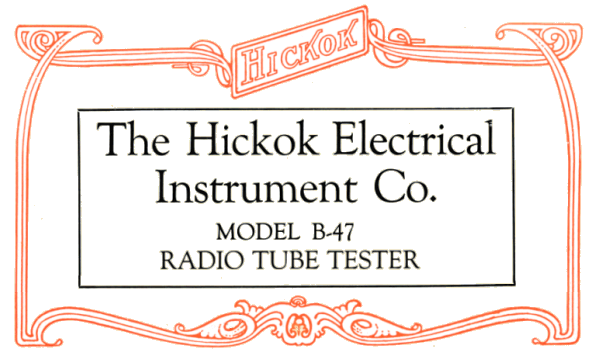
The First Hickok Tube Tester
In the first half of the 1920s, early radio tubes were very uncertain in their operation and characteristics. It became immediately evident to Robert D. Hickok, Sr. that apparatus would be needed to test these
tubes. This need resulted in his first dynamic "Mutual Conductance" radio tube tester. Mutual conductance is a measure of the effect grid voltage has upon the plate current of a vacuum tube.
Hickok's first tube tester (right)
|
 |
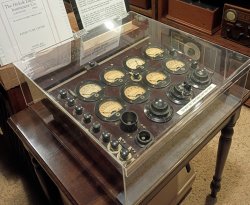 |
Named the Hickok Instruments Model B-47, it was designed to test vacuum tubes in a
manufacturing environment, both in laboratory design and in production testing.
Read Hickok's description of the B-47.
This first battery powered tester of Hickok's was known simply as a Mutual Conductance Radio Tube Tester. Hickok built it in a fairly large size suitable for manufacturers and utilized eight of Hickok's Model 43 and 44 meters. Up to that point Hickok had been primarily a meter manufacturer.
The B-47 was designed to test 199 and 01A tubes. The B-47 also contained a large slide rheostat to give suitable changes in plate voltages.
Unfortunately, the starting price tag of $350 - $400 in the early 1920s (around $7,000 today) Prevented sales of the B-47. This first B-47 of Robert D. Hickok Sr's is the only one that's known to have been manufactured and survived.
Hickok's original history pages stated that this B-47 may be the first vacuum tube tester ever built.
B-47 ~Size: 16.5"x14"x4.5"
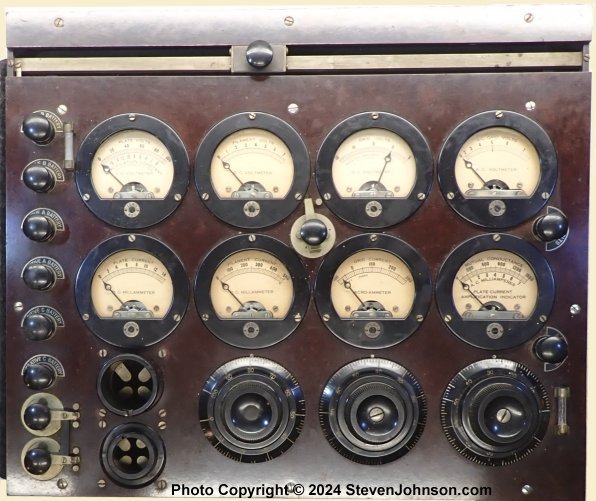
Larger Photo
This first Hickok tube tester was held onto by the Hickok Electrical Instrument Company until just after World War II when it was purchased from Hickok at a company equipment surplus sale.
The buyer, Alex Profits, the owner of Alex Radio on West 25th Street in Cleveland Ohio, collected old meters and the Hickok B-47 sat on display in his radio store until the store closed in the 1980s.
Serial Number 1111
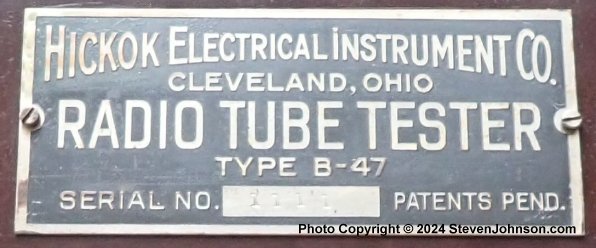
Most of the contents of Alex Radio including this original Hickok B-47 tube tester, were purchased by his long time friend, Gary Strelow of Richfield Ohio, inventor of the glowing solid state 01A tube, calibration tech, and collector of vintage test equipment.
Gary Strelow passed away on August 1st, 2025 and the this Hickok B-47, Hickok's original tube tester, is now in my possession and care.
The B-47 on my bench for cleaning

B-47 Inside Construction
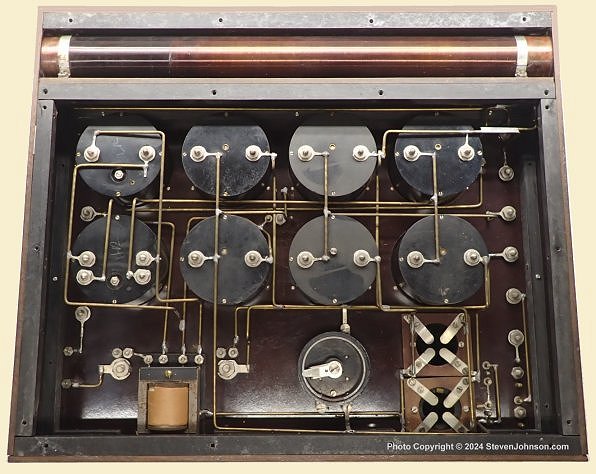
Larger Photo
Hickok B-47 Operations and Theory Bulletin
|



